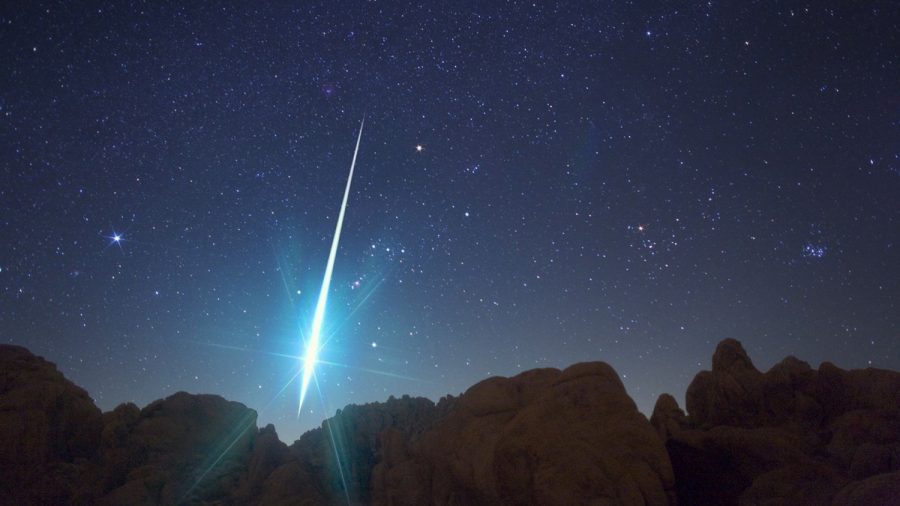At precisely 3:33 a.m. Sunday morning, an awe-inspiring meteor turned into a fireball as it traveled across the sky over the state of Colorado, local media reported.
Given the early hour, only a few people witnessed the meteor firsthand.
According to the American Meteor Society (AMS), at least 37 people reported seeing the meteor. Many people shared video of the event from their home surveillance cameras online or with local broadcaster Deenver7.
Footage shows the object coming down, igniting as it entered the earth’s atmosphere, then turning into a fireball, illuminating the night sky as it evaporated in a dazzling flash of light.
“So yeah this happened,” meteorologist Kody Wilson wrote on X, formerly Twitter, commenting on a video sent to him. In the clip, it can be seen how the meteor lit up an entire neighborhood as it flew overhead.
Another clip shows the meteor illuminating a grove of trees, turning night into day for a brief moment as it burned up.
The blue-green light typically observed when meteors enter the atmosphere is caused by the ionization of oxygen.
Several people also reported hearing a loud bang seconds or even minutes after they saw the meteor ignite—the time it would take for the sound to reach their ears.
According to the AMS, the meteor entered the sky near Allenspark, traveling south along the Front Range, a mountain range on the eastern side of the southern Rocky Mountains stretching from central Colorado to the southeastern part of Wyoming.
The meteor burned up some 50 miles south of where it entered the atmosphere, somewhere above Idaho Springs.
The AMS received reports of the meteor’s incineration from people in Colorado, Wyoming, and even as far as New Mexico.
Majority of Meteors Incinerate
When meteors enter the atmosphere, they typically travel at speeds of 50,000 to 70,000 mph (80,000 to 112,000 kilometers per hour). The friction caused by the atmosphere generates enough heat to evaporate the flying rocks high up in the sky long before they can hit the earth.
Most meteors incinerate at altitudes of 10-20,000 feet (3 to 6 kilometers). Only a very small number of meteors ever make it to the earth’s surface.
While small meteors—typically the size of a marble or smaller—incinerate almost immediately, larger ones like the one observed in Colorado take several seconds to burn up, fragmenting along the way due to the intense pressure and heat.
Even larger meteors tend to explode into thousands of pieces, creating a “meteor shower.”
The largest meteor shower of recent history occurred on Feb. 12, 1947, when a huge meteor exploded over the mountains of eastern Siberia, Russia, after it entered the earth’s atmosphere.
According to eyewitnesses, the fireball was as large as the sun. More than 15,000 meteorites (fragments that make it to the earth’s surface) were recovered from the meteor’s strewnfield, with a total combined weight exceeding 150,000 pounds (70,000 kilograms).

